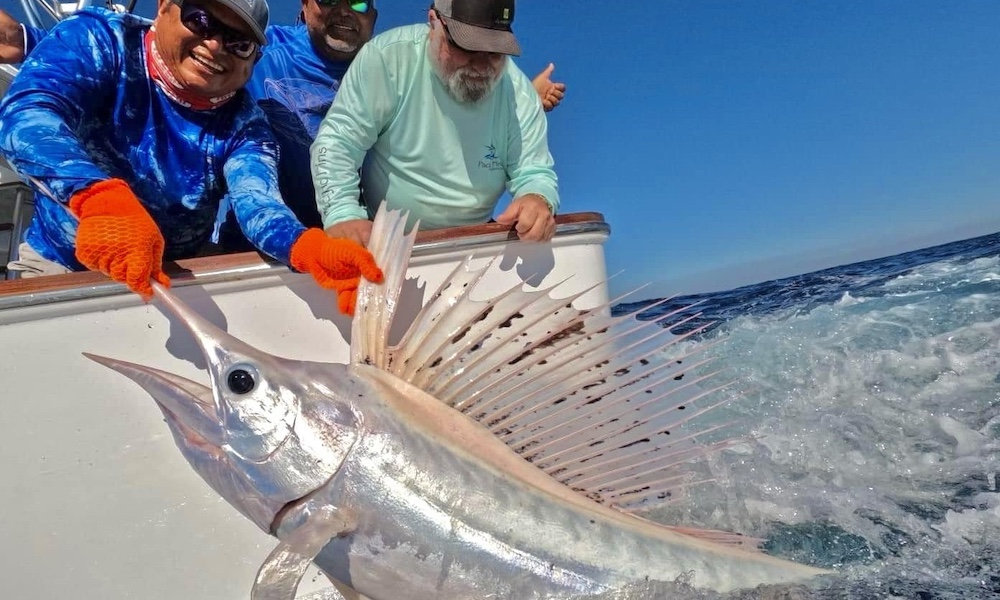Beachgoers north of Cabo San Lucas, Mexico, recently found a freshly killed mako shark with what they believe was a stingray barb protruding from its head.
Beachgoers north of Cabo San Lucas, Mexico, recently found a freshly killed mako shark with what they believed was a stingray barb protruding from its head.
“A shark that washed out on the beach in San Jose del Cabo. Apparently because it lost a battle with a stingray,” Arturo Chacon, owner of Tag Cabo Sportfishing, wrote on Instagram.
His post has been widely shared and the images have been “borrowed” by other social media users, spreading the stingray theory.
But did a stingray really kill the mako shark? Or was the culprit, perhaps, a much swifter billfish?
https://www.instagram.com/p/CLrp_3hLru9/
For The Win Outdoors shared the post with Chris Lowe, who runs the Shark Lab at Cal State Long Beach in Southern California. Lowe was skeptical as to whether it was a stingray barb, citing its thickness, but added that he could not tell for sure without seeing more than what appeared in Chacon’s image.
RELATED: Anglers find great white shark bonanza at whale carcass
“My alternate guess is a marlin or sailfish bill, but hard to tell without seeing the whole thing,” Lowe said. “Either way, it must have incapacitated the shark enough for it to strand on the beach. Dead sharks sink, so it might have disoriented the shark. Based on the angle of attack, the object likely didn’t pierce the shark’s brain.”
Tracy Ehrenberg, whose family runs Pisces Sportfishing in Cabo San Lucas, agreed with Lowe.
“First thought would be stingray, but shark skin is extremely tough especially in that area and I do not believe a stingray could penetrate the skin, so my guess would be a sailfish,” she said. “Fastest fish in the ocean, swam at the shark at speed, impaled [the shark] and and broke its bill off.”
On the Tag Cabo Sportfishing Instagram post, the Living Sharks Museum in Rhode Island reached out to Chacon, asking if he had more images because “there is some debate regarding details going on in the scientific community about this that could be put to rest with more evidence.”
Chacon told For The Outdoors that he did not possess any other images.
He said he was walking on the beach when he and others discovered the shark Feb. 18. “It looked like it was fresh or lost its life not long ago,” Chacon said. “I cannot tell you for sure what it was, so I just assumed it was from a big stingray.”
Chacon added that another local, who was on the beach with a truck, collected the the shark and drove off. “He said he was going to eat it,” Chacon said.
–Images courtesy of Tag Cabo Sportfishing





